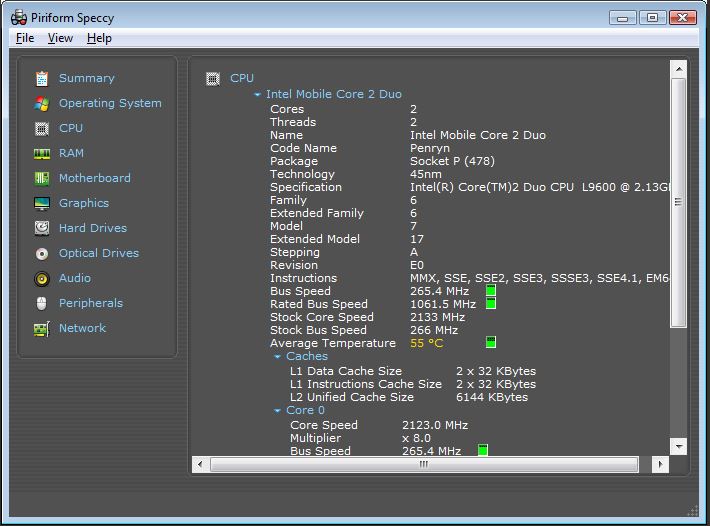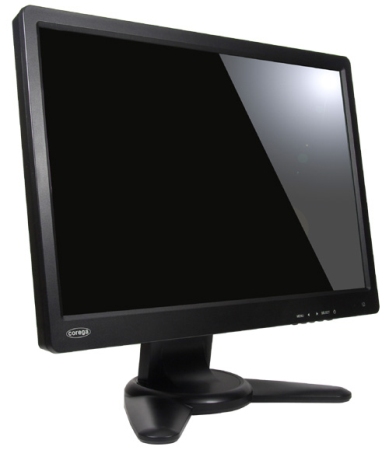

- #Hardware monitor .exe#
- #Hardware monitor install#
- #Hardware monitor mod#
- #Hardware monitor full#
- #Hardware monitor software#
Activity Monitor showed the iMac was idling at ~6%. The next time it froze, I looked at the Console log on screen and noted nothing usual was happening when it froze. To see what was happening, I turned off the screen saver and energy saver, left the CPU always on, opened the Console log and Activity Monitor window (selected highest CPU usage column), left iTunes running, and waited. I found that this control environment NEVER froze, so I knew I wasn't having a hardware issue, but my migrated account continued to spontaneously freeze periodically.

#Hardware monitor install#
To narrow the field of issues, I built a clean partition with Leopard on the iMac and proceeded to install my old apps and data just to use as a control environment. This article copied from hackster.I migrated my old G5 Tower apps/accounts/data to my new 24" 2.8GHz iMac in early November, and had periodic freezes (from 5 minutes to 3 days) that I was having trouble resolving. So we can have a more powerful GPIO output! If you have any questions, please let me know! Fan really works slow :-< Is somebody interested in making a Arduino Fan control Shield? LOL. Sadly, the output of the Arduino GPIO is about 5v 30mA. Modify the code, you can do a lot of thing. Even if you are just start with C# or start with Arduino, this tutorial is good for you to study. Summary It really takes me a lot of time to find the solution, I holp this post is useful for you and save your time.
#Hardware monitor software#
See the original post and download the software here. The function is integrated in the Openhardwaremonitor software.
#Hardware monitor mod#
If you have any questions, please let me know!ĭEMO 4: Arduino Mod for Open Hardware Monitor I find a really nice software in the LattePanda forum that can easily control the GPIO output according to the CPU temperature. See, It's nice! The fan will work when the CPU temperature is above 70 degree. Change the element to: 8.Finally debug your project Connect your Arduino and click Start. Right click on Project > Add New Item, select "Application Manifest File". Force your application to run as administrator. UpdateVisitor updateVisitor = new UpdateVisitor() ħ. Public void VisitHardware(IHardware hardware)įoreach (IHardware subHardware in hardware.SubHardware) subHardware.Accept(this) Public void VisitComputer(IComputer computer) Copy the following code to your Visual Studio program. The OpenHardwareMonitorLib.dll is in the OpenHardwareMonitor folder.ģ. Right Click on References>Add Reference>Browse To use the code, you need to include a copy of OpenHardwareMonitorLib.dll in your project, add a reference to it. Click File > New Project > Visual C# > Console Application > OKĢ. Step 2: Install Visual Studio 2017 Download Visual Studio 2017 Step 3 : Create A New Visual Studio Project 1.
#Hardware monitor .exe#
exe file first to see your hardware information, CPU usage, etc. Step 1: Download Openhardwaremonitor Download the lastest Openhardwaremonitor software here. (The WMI way is not working for me, but I will still post the code and you can have a try)ĭEMO 1: Openhardwaremonitor The Open Hardware Monitor is a free open source software that monitors temperature sensors, fan speeds, voltages, load and clock speeds of a computer. If you have any problems on getting the CPU temperature, feel free to post your questions here! You can also test these code on your PC.

In this post, I will show you one way that can definitely work on everyone's computer by Openhardwaremonitor. I find many solutions but most of them don't work for me. The most difficult part of this project is getting the CPU temperature. These days, I'm trying to make a smart fan cooling system for my baby Lattepanda. I brought one 2/32g LattePanda and used as a normal computer, only $89! Due to its powerful hardware and small size, heat dissipation inevitably becomes a problem (More details about LattePanda, click here). It features an upgraded Z8350 CPU (up to 1.92GHz) and a more stable RTL8723BS Wi-Fi chip (2.4G 802.11n).
#Hardware monitor full#
Story Introduction The LattePanda is a full Windows 10 compatible single board computer based on the Intel Cherry Trail CPU. Software apps and online services Microsoft Visual Studio 2015 Make a DIY Computer cooling system by yourself! Things used in this project Hardware components LattePanda 2GB/32GB (Unactivated) × 1 LattePanda 7-inch 1024 x 600 IPS Display ×1 Arduino Leonardo ×1 DFRobot Aluminum Heatsink Cooling Fan ×1 Use OpenHardwareMonitor to get a reading on the diagnostics of my hardware in C#.


 0 kommentar(er)
0 kommentar(er)
